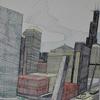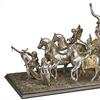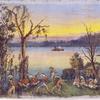From Earliest-Known Indigo Cloths to a Narrative Garment on the 2004 Tsunami, 'Weaving Stories' Spotlights Extraordinary Southeast Asian Textiles and Their Makers
- November 05, 2021 12:23
Lying along the trade routes between India and China, island Southeast Asia has been a crossroads for merchants, pilgrims, and travelers from many parts of the world. Weaving Stories, a new exhibition exclusively at the Asian Art Museum of San Francisco, brings together more than 40 outstanding examples of textiles and garments from across Indonesia, as well as the Philippines and Malaysia, to consider how fabrics produced primarily by women, such as the ikats and batiks that have inspired global fashion for centuries, are woven not only into the daily lives but the cultural foundations of these communities. At the same time, the exhibition shows how hand-made and naturally dyed textiles provide a platform for self-expression and social meaning for women, both as artistic innovators and as vital transmitters of scientific knowledge.
On view from December 17, 2021 to May 2, 2022, Weaving Stories highlights the remarkable diversity of style, technique, and ornamentation of Southeast Asian textiles and traces the development of clothing across this storied region. With the sea connecting people as much as it divided them, local sailors crisscrossed archipelagos bringing textiles with them. Those connections, as well as the introduction of Islam and Christianity, changed modes of dress in many ways; tailored jackets, pants, and Western clothing joined and sometimes supplanted older traditions of draped apparel. In most parts of the region today, mass produced textiles are worn in everyday life, but handmade textiles continue to be used in weddings, funerals, and other milestone or ceremonial events.
“Weaving is one of the oldest and most intimate forms of art,” says exhibition curator Natasha Reichle, Associate Curator of Southeast Asian Art. “From birth to death, we are swaddled, wrapped, or shrouded in cloth. It protects and adorns our homes, our sacred spaces, and our bodies. Weaving Stories is a chance to look closely at why different kinds of cloth and clothing are valued, and by whom, and how women’s contributions to the arts of Southeast Asia are ripe for reevaluation—especially in light of the influence textile arts have on contemporary artistic practices around the world right now.”
By showcasing textiles from the 19th and 20th centuries, most of which have never been exhibited before, in combination with fascinating archival photographs, Weaving Stories also pieces together a portrait of an ancient craft tradition that is equally able to reflect the complex communities and events of the modern world. One overtly narrative garment on view is by artist Milla Sungkar depicting the devastation of the 2004 Aceh earthquake and tsunami, all of the textiles in the exhibition tell a story.
The clothing in the exhibition can be “read” to learn the wearer’s age, gender, marital status, or ethnic identity. The elongated diamond shape in the center of a chest cloth from Java, for example, showed that the wearer was a married woman. White batiks with dark blue patterning could indicate membership in the Indo-Chinese community and often signaled that the wearer was in mourning. Among indigenous peoples of the southern Philippines today, traditional garments like finely decorated blouses are markers of cultural identity, as well as symbols of resistance and resilience.
Weaving Stories goes beyond the aesthetics and symbolism of textiles to tell stories about how cloth continues to be made today. Visitors will be able to touch samples of fabrics, including handspun cotton and silk, piña (made from pineapple leaves), and abaca (made from banana plants), to understand how the garments on view felt to the wearer. Videos demonstrating traditional processes reveal how women transformed these fibers into finished textiles.
Other multimedia displays allow visitors to examine a selection of textiles at a magnification station. With a macro lens, individual strands of thread are visible as well as the techniques of dying them with ikat or wrapping them with thin strips of paper covered with gold or silver.
The ability to dye was as valued as woman’s ability to weave. Blue derived from the leaf of the indigo plant and red from the root of the morinda plant provide the basis of the color palette for many traditional textiles. The Asian Art Museum has some of the earliest known examples of indigo cloths decorated with batik, as well as bold ceremonial textiles foregrounding red. Masterpieces like those on display would have needed dozens of immersions in a dye bath to achieve these saturated colors, and their enduring brilliance invites visitors to appreciate them as pure works of art and to consider how the complexity of their production increased the status of both their maker and their wearer.
“Textiles are expressions of self within social networks of family or ethnic groups; they are simultaneously very intimate and highly public,” says Reichle. “This exhibition helps us think about textiles as both works of art and as markers of identity, belief, and standing within a broader community.”
Textiles were used by people from every faith tradition across the region in their spiritual lives, often as talismans. A striking example is a rare silk ritual cloth (cepuk) from Bali; spiky white triangles along its borders symbolize the teeth of the guardian deity Barong, revealing the cepuk’s protective function. A deep red cloth ornamented with symbols of longevity and good fortune was used by Indonesians of Chinese heritage to drape a home altar to their ancestors. Among the Iban in Borneo, textiles ornamented with intricate ikat patterns were made to line the walls of longhouses and invited the support of gods and ancestors.
“With the ongoing pandemic, we see how our reliance on textiles to relate to the world around us has shifted—with masks, just a tiny piece of cloth, protecting us and signaling our respect for the well-being of others. I hope our audiences all come away with a similarly expanded appreciation for these incredible woven artworks,” says Jay Xu, the Barbara Bass Bakar Director of the Asian Art Museum. “The museum’s recent expansion and investment in digital learning tools means Weaving Stories has a bigger, broader platform to display art from creators and regions which have historically been less well represented in our collections and exhibitions. This is a vibrant encounter with some of the world’s most inspirational fabrics and truly lets visitors connect the art of the past to their lives today.”
More information: asianart.org




















